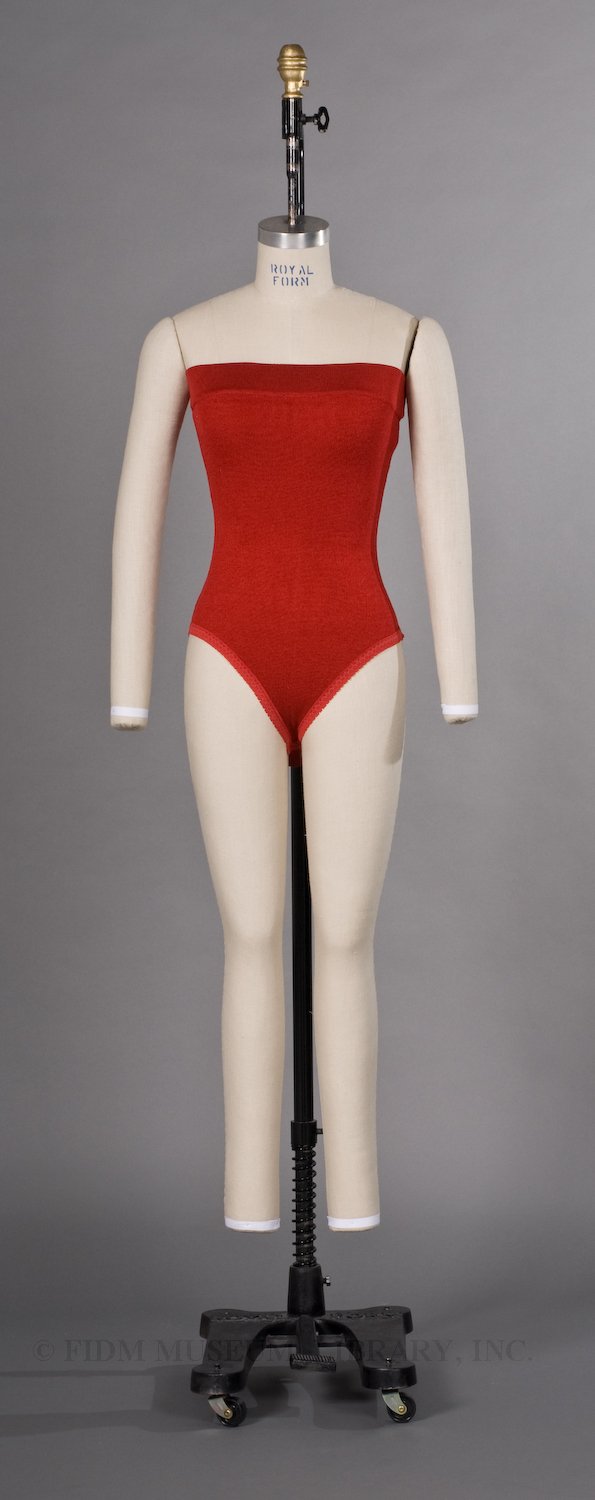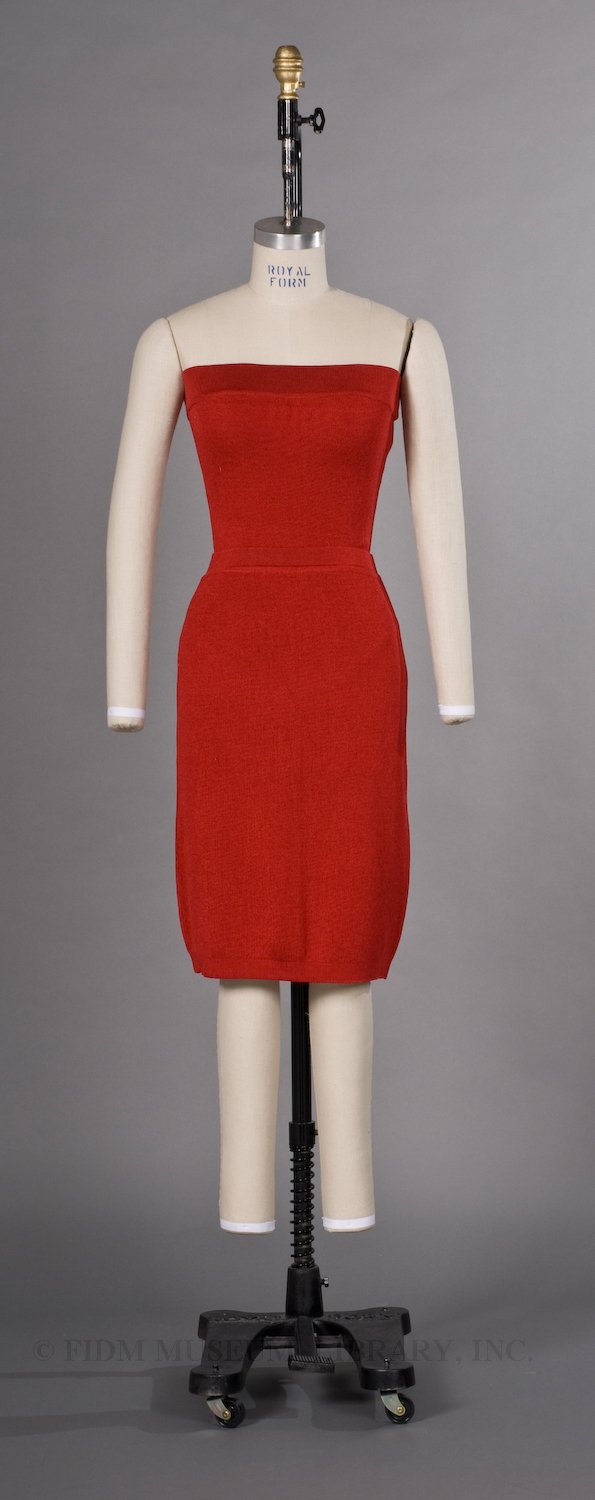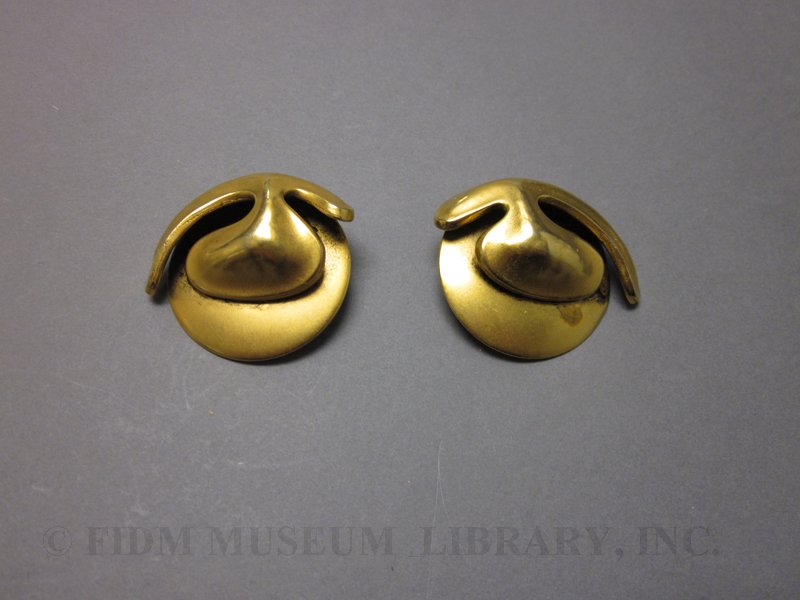Donna Karan's first solo collection, presented in spring 1985, was an immediate success. According to a fashion editor who attended the presentation, "pandemonium broke loose after the last three models appeared."1 Consisting of layered, monochromatic ensembles in cashmere, wool jersey and other subtly luxurious fabrics, Karan's collection responded to the needs of working women like herself: busy professionals with a desire to look both feminine and polished. By design, Karan's clothing flattered a curvier body: "Somewhere in the back of my mind is the figure I always start with—wide shoulders and a shaped body, with round hips."2
The foundation of Karan's signature style was a long-sleeved bodysuit, usually worn with opaque tights. Unlike the standard button-up blouse, the knit bodysuit emphasized and flattered a woman's torso. Over this sleek foundation, Karan layered, wrapped or tied skirts, shawls, coats and jackets. Because Karan favored a monochrome (usually black) palette, the basic components of this versatile wardrobe could be combined to create ensembles suitable for any season, any occasion.
This red Donna Karan knit bodysuit pairs with a matching skirt.
 Bodysuit
Bodysuit
Donna Karan
c. 1990
Gift of Mary Dubrow
S2005.855.2A
 S2005.855.2AB Bodysuit and matching skirt
S2005.855.2AB Bodysuit and matching skirt
Karan's soft fabrics and draped silhouettes found a perfect complement in the organic, sculptural jewelry of Robert Lee Morris. For Karan's first collection, Morris designed "snakelike links used for necklaces and belts, multiple strands of oversize beads and snail-shaped earrings," all with a glowing gold-plated finish.3 A self-taught jewelry designer, Morris began crafting jewelry from wire and other scavenged materials in the late 1960s. From the beginning, Morris's aesthetic focused on reinterpreting organic forms; vertebrae, leaves and distorted circles were important features in his work. When the New York gallery Sculpture to Wear began promoting his work in the early 1970s, Morris moved to New York City. His style of jewelry, based on unique design instead of expensive materials, suited the adventurous milieu of 1970s New York. Fans of his work included Andy Warhol and Tina Chow. In 1977, Morris opened Artwear, an influential gallery-style jewelry store featuring the work of non-traditional jewelry designers.
In 1985, Donna Karan asked Robert Lee Morris to collaborate on jewelry for her first solo collection. Though Morris had worked with other fashion designers, including Kansai Yamamoto, Geoffrey Beene and Calvin Klein, his collaboration with Karan would be the most enduring, lasting on-and-off for 20 years. This pair of gold-plated earrings by Robert Lee Morris for Donna Karan feature the organic shapes and lustrous finish that distinguish his work for Donna Karan.
 Earrings
Earrings
Robert Lee Morris for Donna Karan
c. 1988
Gift of Mary Dubrow
2005.855.11AB
Donna Karan's first collection was both highly acclaimed and commercially successful. Her system of layered dressing offered a sophisticated alternative to the boxy business suit. But, the look wasn't complete without a few pieces of Robert Lee Morris jewelry. In 1986, the New York Times suggested that the ongoing Karan/Morris collaboration was responsible for the new popularity of chunky gold jewelry worn with black clothing. And it's worth noting that both the earrings and bodysuit/skirt featured in this post are part of a larger donation of Donna Karan garments and Robert Lee Morris jewelry, all given to the FIDM Museum by the same donor. Presumably, she mixed and matched her Donna Karan separates, completing the final ensemble with a piece (or two) of Robert Lee Morris jewelry.
1 Bernadine, Morris. "Donna Karan Stars on Her Own." New York Times. 4 May 1985: 52.
2 Darnton, Nina. “On Her Own.” New York Times. 14 April 1985: SM70.
3 Schiro, Anne-Marie. "Notes on Fashion." New York Times. 30 April 1985: C10.

